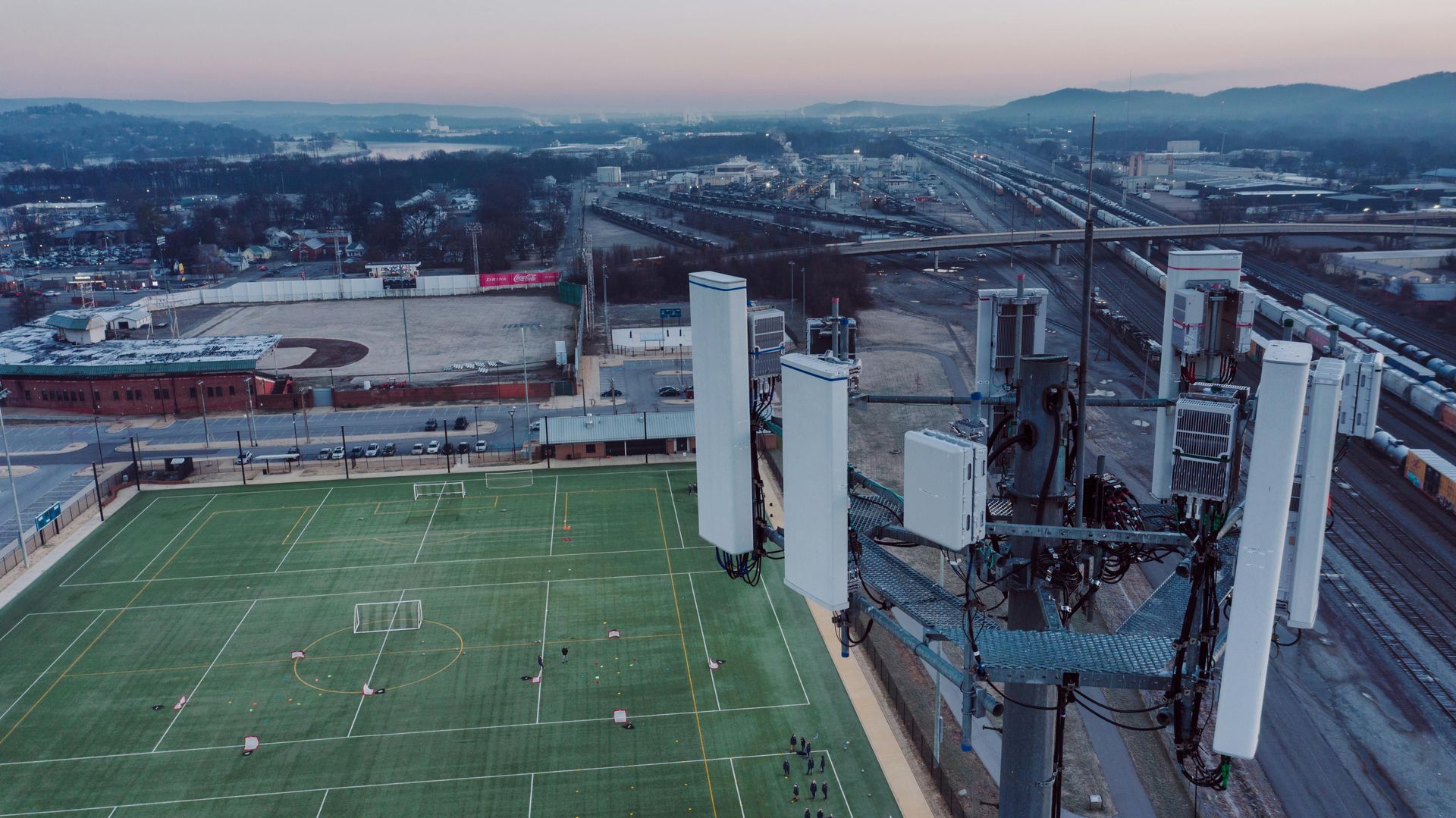Interactive Maps Show Growth of Municipal Broadband Networks
ILSR Releases Interactive Map Showcasing Growth of Municipal Broadband Networks

The Institute for Local Self-Reliance (ILSR) has launched an innovative interactive map that highlights the growth of municipal broadband networks across the United States. This comprehensive resource offers invaluable insights into the increasing prevalence of community-driven broadband initiatives, underscoring the critical role local governments play in enhancing connectivity for their residents.
The Significance of Municipal Broadband Networks
Municipal broadband networks represent a significant shift in how communities approach internet access. As private sector providers often fall short in delivering reliable and affordable high-speed internet, municipalities have stepped in to bridge the gap. This proactive stance is vital for several reasons:
1. Enhanced Connectivity: Municipal networks provide communities with access to high-speed internet, which is essential for economic development, education, healthcare, and overall quality of life. In an era where digital access is crucial, these networks ensure that residents are not left behind. Access to reliable internet supports remote work, e-learning, telehealth, and other online services that have become staples in modern life.
2. Local Control: By establishing their own broadband services, municipalities gain greater control over pricing, service quality, and infrastructure development. This local governance fosters accountability and responsiveness to community needs, differentiating municipal networks from large, profit-driven corporations. Local officials can tailor services to fit the specific demands of their constituents, ensuring that the community's unique requirements are met.
3. Economic Growth: Reliable internet access is a cornerstone for attracting businesses and fostering innovation. Municipal broadband initiatives often lead to job creation, improved local economies, and increased property values. Communities that invest in broadband infrastructure can position themselves as attractive destinations for new businesses and residents. Moreover, local businesses benefit from enhanced connectivity, enabling them to operate more efficiently and reach broader markets.
4. Digital Equity: Municipal broadband initiatives are instrumental in addressing issues of digital equity. By providing affordable and reliable internet access, these networks help bridge the digital divide that affects low-income households and underserved communities. Ensuring equitable access to broadband services is essential for fostering inclusive economic growth and enabling all citizens to participate fully in society.
Key Features of the Interactive Map
The ILSR's interactive map is a powerful tool for policymakers, community leaders, and advocates for broadband expansion. Here are some key features:
1. Comprehensive Coverage: The map details existing municipal broadband networks across the country, showcasing the growth and reach of these initiatives. Users can explore various regions to understand where municipal networks have been established and how they are expanding. This feature is particularly beneficial for communities looking to benchmark their progress against others.
2. User-Friendly Interface: The interactive design allows users to easily navigate through different geographic areas, providing a clear visualization of broadband availability. This functionality is essential for community leaders looking to identify gaps in coverage and areas in need of investment. The intuitive interface enhances user engagement and ensures that stakeholders can access crucial information with ease.
3. Data-Driven Insights: The map is supported by robust data, including metrics on speed, service offerings, and customer satisfaction. These insights empower communities to make informed decisions about their broadband strategies and investment priorities. By analyzing this data, local governments can identify trends, assess service performance, and prioritize areas for improvement.
4. Highlighting Success Stories: Alongside the map, the ILSR features case studies of successful municipal broadband initiatives. These stories serve as models for other communities, illustrating the benefits and potential challenges of establishing local broadband networks. Sharing these success stories fosters a sense of community and encourages other municipalities to explore similar initiatives.
The Growing Trend of Municipal Broadband
The release of this interactive map comes at a pivotal moment when municipalities are increasingly recognizing the importance of broadband access. The COVID-19 pandemic highlighted existing disparities in internet connectivity, prompting many local governments to take action.
Trends Driving Municipal Broadband Initiatives
1. Rising Demand for Connectivity: The shift to remote work and online learning has intensified the demand for reliable internet access. Municipalities are responding by investing in broadband infrastructure to meet the needs of their residents. As educational institutions and workplaces adapt to hybrid models, access to high-speed internet becomes even more critical.
2. Increased Federal Support: Recent federal initiatives aimed at expanding broadband access have provided municipalities with additional resources to develop their networks. Programs like the American Rescue Plan and the Infrastructure Investment and Jobs Act allocate significant funding for broadband expansion efforts. This federal support is crucial for communities seeking to overcome financial barriers to infrastructure investment.
3. Community Advocacy: Grassroots efforts have played a significant role in pushing for municipal broadband solutions. Community members are increasingly vocal about their internet needs, urging local governments to explore options for expanding access. Activism and awareness campaigns have been instrumental in rallying support for municipal broadband initiatives, emphasizing the importance of connectivity in today’s digital economy.
4. Technological Advancements: The rapid advancement of technology has made it easier and more cost-effective for municipalities to deploy broadband networks. Innovations in fiber optics, wireless technology, and network management tools allow communities to deliver high-quality internet services efficiently. Municipalities can now leverage these advancements to enhance their broadband offerings and improve overall service quality.
Challenges and Considerations
While the growth of municipal broadband networks is promising, it is essential to recognize the challenges that communities may face when establishing and maintaining these services.
1. Funding and Financial Viability: Securing funding for municipal broadband projects can be a significant hurdle. Communities often need to navigate complex financing options, including grants, loans, and public-private partnerships. Ensuring the long-term financial viability of these projects requires careful planning and ongoing evaluation of service costs and revenue models.
2. Regulatory Hurdles: Municipalities may encounter regulatory challenges at both the state and federal levels. Legislative frameworks regarding municipal broadband can vary significantly, and local governments must stay informed about relevant regulations that may impact their initiatives. Advocacy for favorable policies is essential to streamline the process of establishing and expanding municipal networks.
3. Technical Expertise: Building and managing a broadband network requires specialized technical expertise. Municipalities may need to invest in training or hire skilled personnel to ensure the successful implementation and maintenance of their networks. Collaboration with experienced partners can also help mitigate this challenge, ensuring that communities have access to the knowledge and resources they need.
The ILSR's interactive map of municipal broadband networks is a significant contribution to the ongoing conversation about broadband access in the United States. By highlighting the growth of these community-driven initiatives, the map underscores the vital role that local governments play in bridging the digital divide.
As more municipalities recognize the importance of investing in broadband infrastructure, the landscape of internet access in the U.S. will continue to evolve. The insights provided by the interactive map will empower communities to make informed decisions, advocate for necessary investments, and ultimately enhance the quality of life for their residents.
In a world where connectivity is essential, municipal broadband networks stand as a testament to the power of local action in addressing the challenges of the digital age. By embracing these initiatives, communities can secure their futures, ensuring that all residents have access to the resources and opportunities that come with reliable high-speed internet.
A Call to Action
As the momentum for municipal broadband networks continues to grow, community leaders, policymakers, and stakeholders must collaborate to harness this potential. By advocating for supportive legislation, investing in infrastructure, and engaging with residents, municipalities can transform the broadband landscape and create a more equitable digital future for all.
With the ILSR's interactive map serving as a guiding resource, communities can learn from one another, share best practices, and drive meaningful change that ensures robust broadband access for every citizen. The journey toward universal connectivity begins with local initiatives—let us take that journey together.











